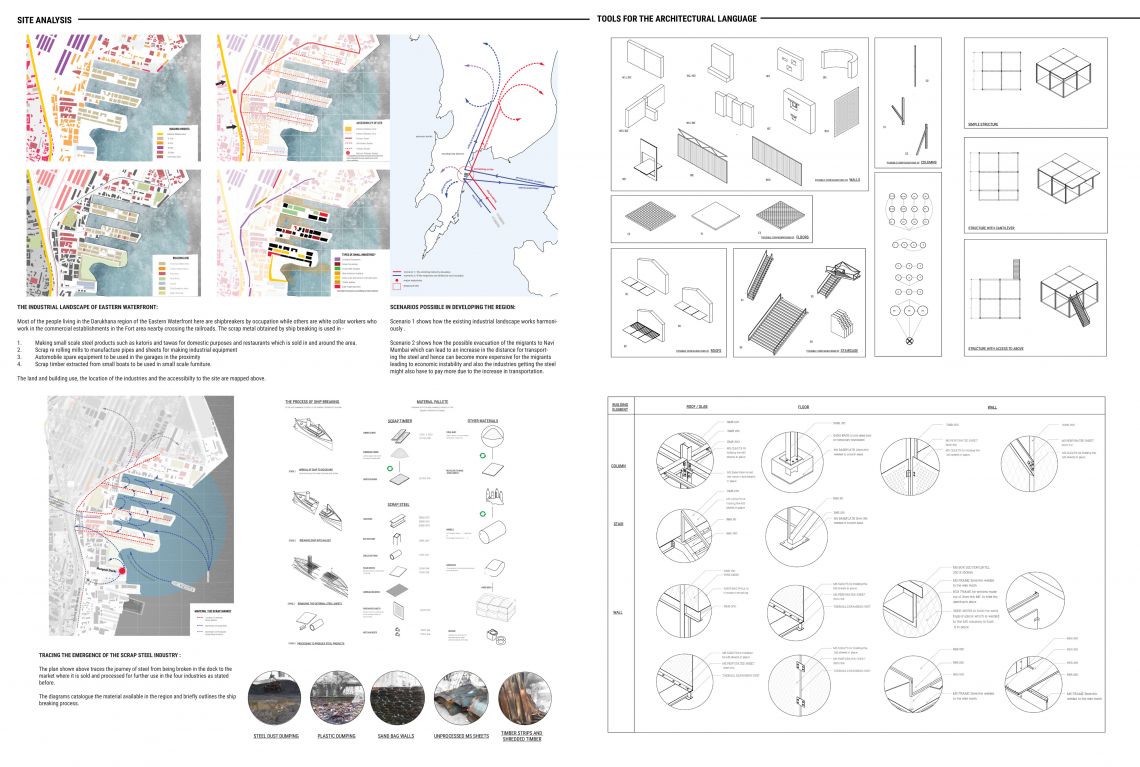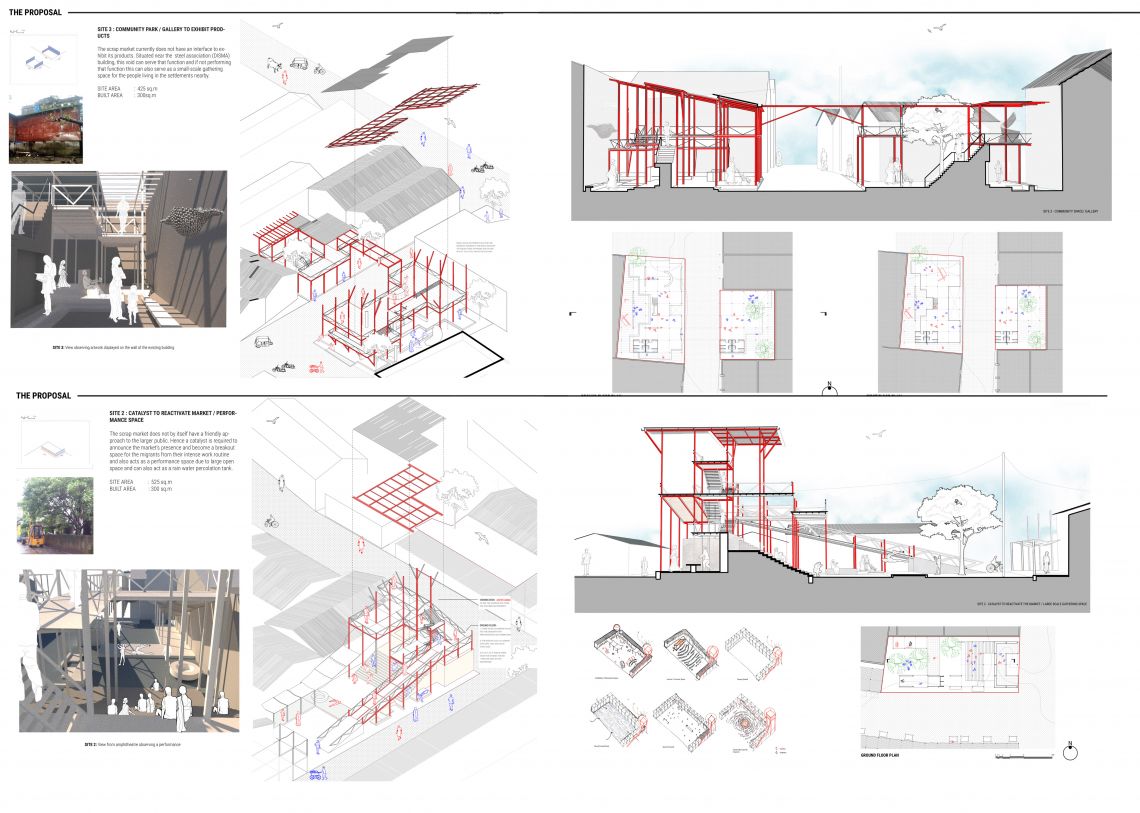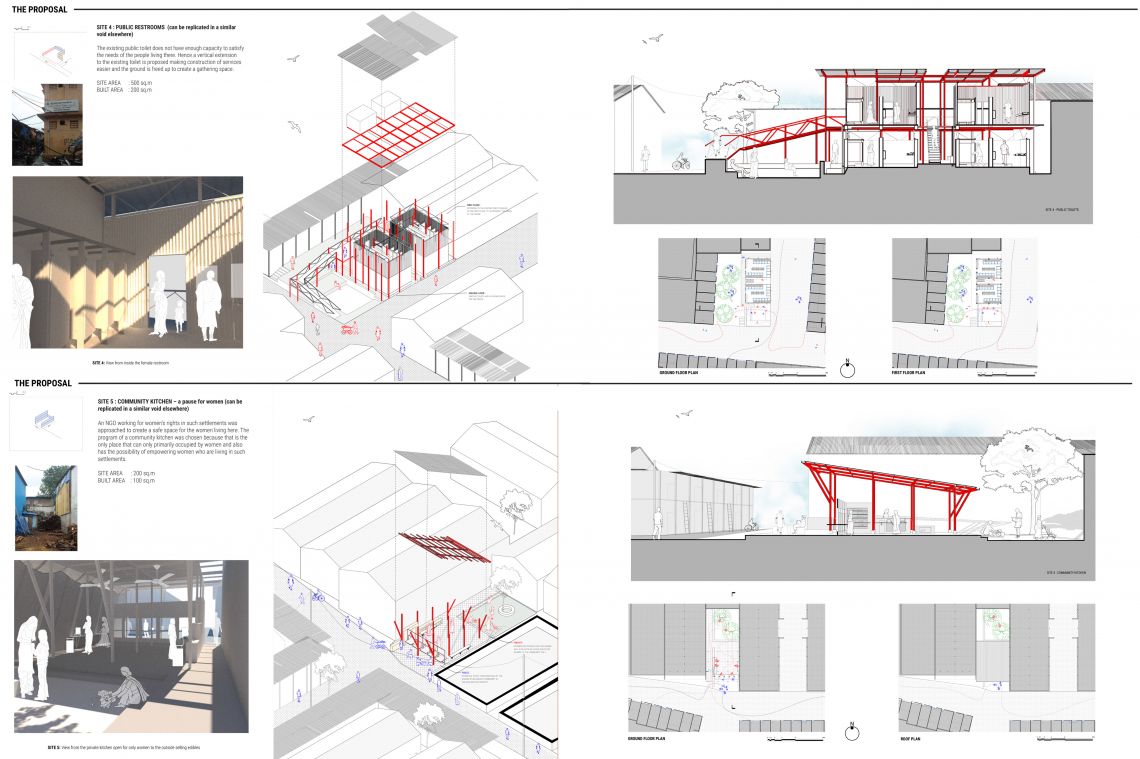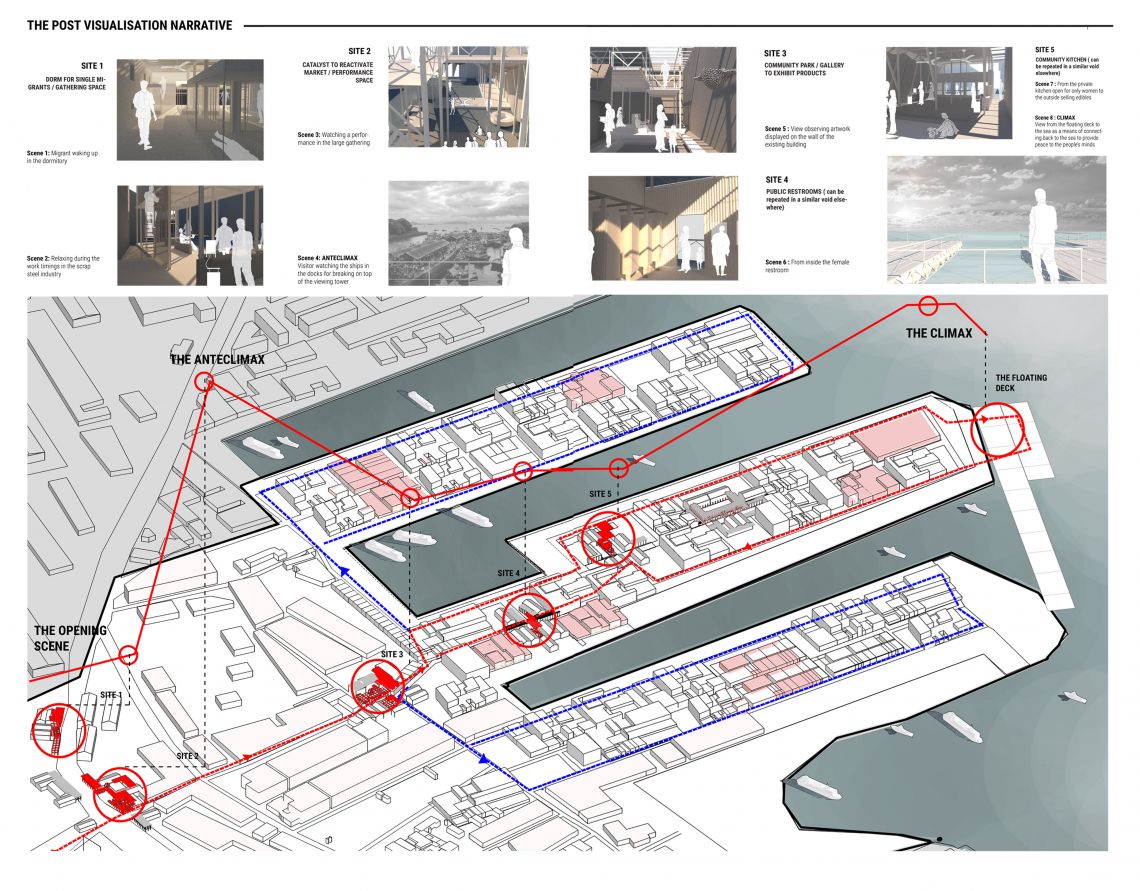Your browser is out-of-date!
For a richer surfing experience on our website, please update your browser. Update my browser now!
For a richer surfing experience on our website, please update your browser. Update my browser now!
Mumbai, the commercial and financial hub of the country has seen many changes in its history of over 200 years. The ports of Mumbai have played an integral role in the rise of the city and have also politically played an important role in the country. Because of its location, the Eastern Waterfront has typically served the city as a major economic driver through its shipping and manufacturing industries. The informal industries of scrap metal and shipbreaking continues to grow here in spite of being officially shifted to Navi Mumbai due to the geographical proximity to not only the industries in Mumbai but also to the domestic consumers of the small-scale steel products. However, due to the shift in most of the Port related activities of the Eastern Waterfront to JnPT Harbour Terminal in Navi Mumbai due to which abandonment of certain pieces of land and relocation of some industries has occurred, has led to under-usage of resources here, further strengthens the need for the redevelopment of the Eastern Waterfront. Considering the extreme shortage of built space in the city, this underutilized land (due to the abandoned industries) offers a great and historic opportunity to fulfil the ever-growing demand for public space in Mumbai. It would also give an impetus to the economy and provide the much needed social and recreational public amenities to the city. This project undertakes five such voids in a neighbourhood to demonstrate through seven architectural interventions and retrofitting social spaces within these voids. The programs of these sites emerge through its immediate context while also serving to a greater narrative of the neighbourhood. These interventions serve as new anchor points in one’s mental map and aid in building one’s association to the place through increased instances of social interaction. Thus, the aim to evolve a potential methodology to develop the abandoned landscapes of industrial production within the city of Mumbai to empower the people of the region -the migrants of the ship breaking industry - at the same time also provide spaces for their own activities by utilizing the interstitial voids within the existing urban fabric of the Eastern Waterfront and hence rejects the ‘tabula rasa’ nature of development of the waterfronts for the cities of the Global South.







